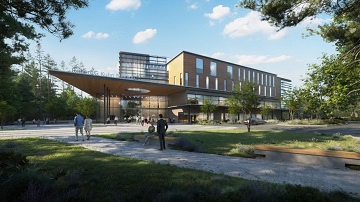 Thursday, May 2, 2024
Thursday, May 2, 2024  Thursday, May 2, 2024
Thursday, May 2, 2024 
As blogged on Business in Vancouver, virtual reality, artificial intelligence and big data are reframing the operations of an industry often thought of as a technological laggard.
Those technologies are also fundamentally changing how buildings are designed.
“Technology is just looming there as the big game-changer,” said David Thom, president of IBI Group, which ranks second on Business in Vancouver’s Biggest Architecture Firms in Metro Vancouver list (page 16).
For many of the firms on BIV’s list, technology has changed the way they work. It’s changed their historical business models, their relationships with clients and the traditionally sequential and siloed process of designing and developing buildings.
It has also unlocked the ability to create more complex structures more efficiently, with new building materials and greater precision.
“It’s a data business,” Thom said. “How are these buildings designed? They’re designed by inputting data, not lines on a paper.”
Omicron Architecture Engineering Construction Ltd., for example, integrated data from four different continents into its building information model for the multimillion-dollar Molson Coors Canada Inc. (TSX:TPX.B) brewery in Chilliwack.
“That’s something we didn’t do five years ago or 10 years ago,” said Omicron CEO Bill Tucker. “The capability and the tools just weren’t there.”
The adoption of parametric modelling allows firms to crunch large amounts of data and compute realistic and incredibly detailed plans in minutes.